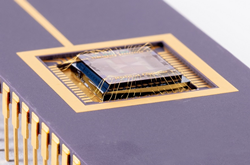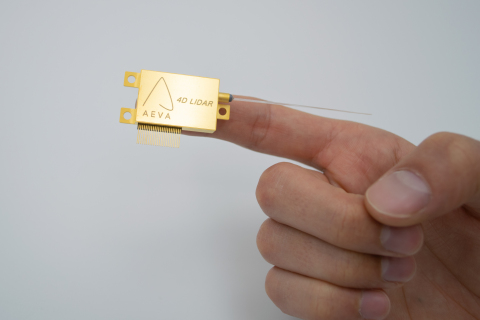The goal of launching fully autonomous vehicle as well as advanced driver assistance systems is driving LiDAR developers to accelerate their technology developments. Draper, a U.S. LiDAR producer, unveiled its LiDAR with MEMS beam steering technology. Also, Aeva, founded by two former Apple engineers, introduced 4D LiDAR-on-chip.
The two companies both focus on scaling down and simplifying LiDAR system. Draper has developed and advanced, a LiDAR-on-a-Chip that uses patented, all-digital MEMS optical switches for beam steering. According to Draper, its all-digital switches provide robustness for the harsh automotive environment, which carries advantages over competing solid-state approaches that rely on analog beam steering. In addition, the use of novel components, like optical switches, MEMS and integrated photonics, all on a single-chip, allows Draper to surpass current LiDARs in range and resolution.

(Image: Draper)
Draper’s LiDAR is being developed to image a range of hundreds of meters while providing a corresponding angular resolution targeted at less than 0.1-degrees.
Meanwhile, Aeva introduced its Frequency Modulated Continuous Wave (FMCW) LiDAR system, Aeries, which integrates key elements of a LiDAR sensor into a photonics chip. Aeva’s 4D LiDAR-on-chip reduces the size and power of the device by orders of magnitude while achieving full range performance of over 300m for low reflective objects. According to Aeva, its LiDAR-on-chip will cost less than US$500, in contrast to the expansive LiDAR sensors currently.

(Image: Aeva)
Porsche SE, a majority voting shareholder of the Volkswagen Group, recently made an investment into the company, endorsing Aeva’s approach. This investment is Porsche SE’s only investment in LiDAR technology and expands on the existing partnership between Aeva and Audi’s self-driving unit.
The VW Group said that the company plans to use Aeva’s 4D LiDAR for its new models which will launch in 2022/23.













